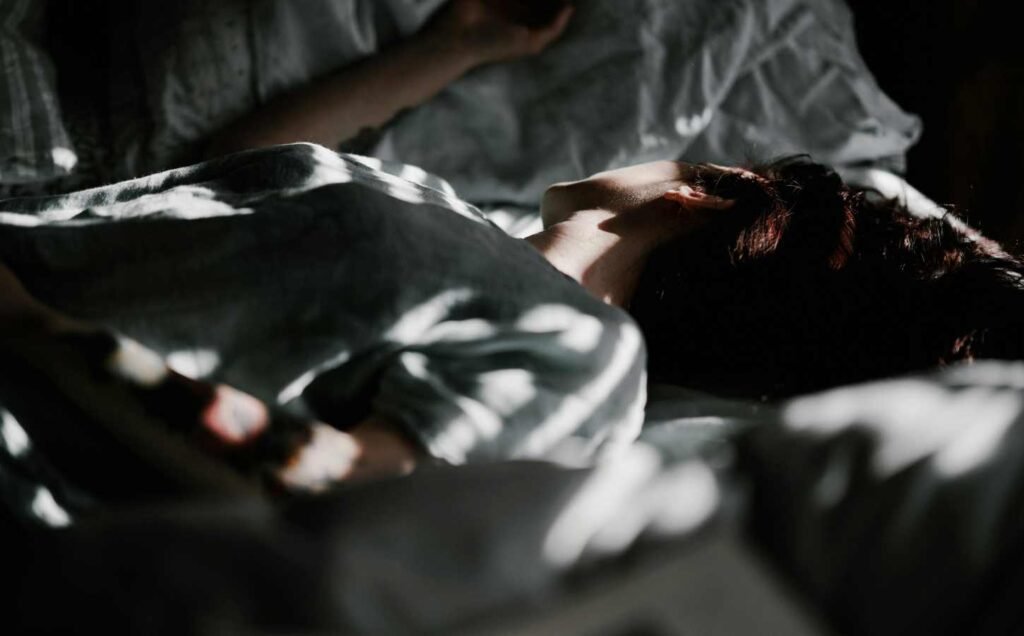Imagine waking up to find you’ve been acting out your dreams or walking around the house in your sleep.
For many people with parasomnias, this is a nightly occurrence. Parasomnias are a group of sleep disorders that involve abnormal behaviors, emotions and activities during sleep. They can really impact sleep quality and overall health. Let’s get into the nitty gritty of parasomnias, what are the symptoms, causes and treatment options.
What are Parasomnias?
Parasomnias are a range of weird behaviors that happen during sleep. They can occur during specific sleep stages and result in incomplete arousals and disrupted sleep. The main types of parasomnias are:
- NREM Parasomnias: These occur during the first half of the night when the body is in deep non-rapid eye movement (NREM) sleep. Common NREM parasomnias are sleepwalking, sleep terrors, and confusional arousals.
- REM Parasomnias: These occur during rapid eye movement (REM) sleep, a stage of sleep associated with vivid dreaming. REM related parasomnias are REM sleep behavior disorder (RBD) and recurrent isolated sleep paralysis.
Symptoms of Parasomnias
Parasomnias are recognized by the symptoms that appear. Here’s a breakdown of the common symptoms for each type of parasomnias:
- Sleepwalking: Walk or perform complex activities while asleep with no memory of it upon waking. This can range from simple movements like sitting up in bed to more complex actions like leaving the house.
- Sleep Terrors: Sudden arousal from sleep with intense fear, screaming, and rapid heart rate, often without full awakening. Unlike nightmares, sleep terrors occur during NREM sleep and are not usually remembered.
- Confusional Arousals: Confusion and disorientation upon waking, usually in the first few hours of sleep. Person will sit up in bed and look around, appear awake but not fully conscious.
- REM Sleep Behavior Disorder (RBD): Act out vivid dreams, often involving aggressive or violent actions. They may talk, shout, or thrash around in bed, sometimes injuring themselves or their bed partner.
- Sleep Paralysis: Temporary inability to move or speak while falling asleep or upon waking, often with hallucinations. These can be scary but are usually harmless.
Causes of Parasomnias
The causes of parasomnias are complex and not fully understood but several factors can contribute to it:
- Genetic Predisposition: There is evidence that parasomnias can run in families so there may be a genetic component.
- Stress and Anxiety: High levels of stress and anxiety can trigger or exacerbate parasomnia episodes. Managing these emotional states is key to reducing the frequency and severity of symptoms.
- Sleep Deprivation: Lack of sleep can increase the likelihood of parasomnias. Getting sufficient and good quality sleep is crucial to minimize these disturbances.
- Medications: Certain medications especially those used to treat psychiatric conditions can affect sleep architecture and contribute to parasomnias.
- Substance Use: Alcohol and recreational drugs can disrupt sleep patterns and trigger parasomnia episodes. Avoiding these substances can improve sleep quality.
- Underlying Medical Conditions: Conditions like sleep apnea, restless legs syndrome, and neurological disorders are associated with parasomnias and can worsen symptoms.
Diagnosing Parasomnias
Diagnosing parasomnias involves a thorough evaluation which may include:
- Medical History: A review of the patient’s medical history including family history of sleep disorders to identify risk factors.
- Sleep Diary: Keeping a sleep diary to document sleep patterns, behaviors and nocturnal events can help in diagnosis.
- Polysomnography: Overnight sleep study that monitors brain waves, oxygen levels, heart rate and muscle activity to identify abnormal sleep behaviors and disturbances.
Treatment for Parasomnias
Treatment for parasomnias focuses on managing symptoms, reducing triggers and ensuring safety. Here are some of the approaches:
- Lifestyle Changes: Sleep hygiene is key. This means maintaining a regular sleep schedule, having a relaxing bedtime routine and optimizing the sleep environment to be dark, cool and quiet.
- Stress Management: Techniques like mindfulness, meditation and cognitive-behavioral therapy (CBT) can help manage stress and anxiety which are known triggers for parasomnias.
- Medications: In some cases, medications like benzodiazepines or antidepressants may be prescribed to manage symptoms especially for REM sleep behavior disorder.
- Safety Precautions: Safety measures to prevent injury during episodes is crucial. This can include securing the sleeping area, using bed alarms or sleeping in a ground floor bedroom to prevent falls.
- Addressing Underlying Conditions: Treating underlying medical conditions like sleep apnea or restless legs syndrome can also reduce parasomnia episodes.
Living with Parasomnias
Living with parasomnias can be tough but with the right strategies and support, individuals can manage their symptoms. Educating family members and sleep partners about the condition is important to get their understanding and support. Getting professional help from a sleep specialist can give you a personalized treatment plan and improve your quality of life.
Conclusion:
Parasomnias are sleep disorders that can disrupt an individual’s life. Understanding the symptoms, causes and treatment options is key to managing these conditions. By prioritizing good sleep hygiene, managing stress and getting professional help, those with parasomnias can get better sleep and overall health.
If you or a loved one is experiencing parasomnia symptoms, consult a doctor to explore your treatment options.
Understanding Sexsomnia: A Dangerous Sleep Disorder

Sexsomnia involves performing sexual behaviors while asleep, often leaving the person unaware of their actions.
Understanding sexsomnia is crucial for managing its impact on individuals and their relationships. Let’s explore what sexsomnia is, its symptoms, causes, and potential treatments.
Continue reading: Understanding Sexsomnia: A Dangerous Sleep Disorder
Improve Sleep Duration and Quality with Progressive Muscle Relaxation for Sleep

Using progressive muscle relaxation for sleep, is a simple yet powerful technique that can significantly enhance the duration and quality of sleep. By systematically tensing and relaxing your muscles, you can reduce physical and mental stress, making it easier to drift off into a restful sleep.
Incorporate progressive muscle relaxation into your nightly routine and combine it with good sleep hygiene practices to enjoy the full benefits of a rejuvenating night’s sleep.
Continue reading: Progressive Muscle Relaxation for Sleep



